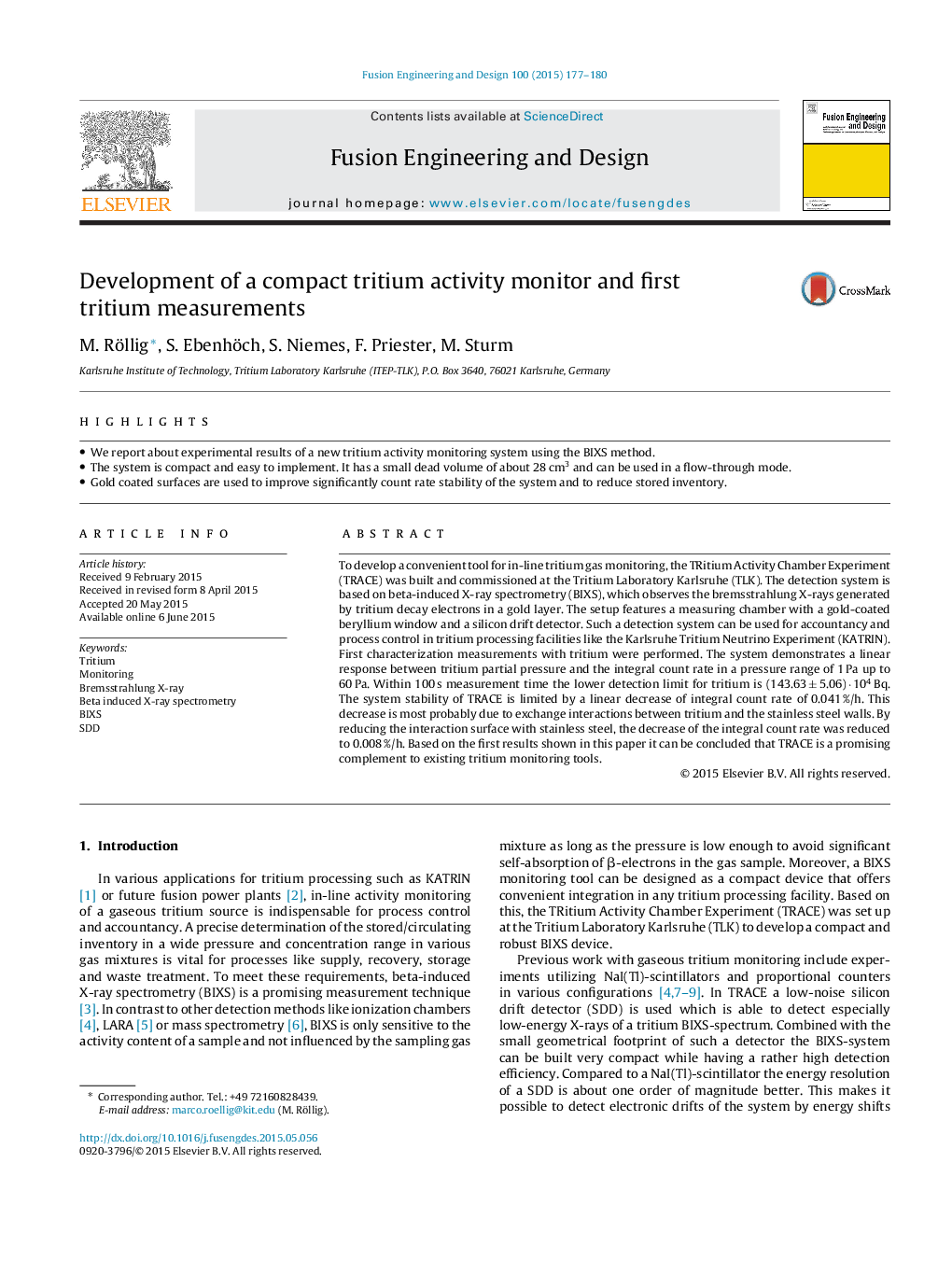| Article ID | Journal | Published Year | Pages | File Type |
|---|---|---|---|---|
| 6745588 | Fusion Engineering and Design | 2015 | 4 Pages |
Abstract
To develop a convenient tool for in-line tritium gas monitoring, the TRitium Activity Chamber Experiment (TRACE) was built and commissioned at the Tritium Laboratory Karlsruhe (TLK). The detection system is based on beta-induced X-ray spectrometry (BIXS), which observes the bremsstrahlung X-rays generated by tritium decay electrons in a gold layer. The setup features a measuring chamber with a gold-coated beryllium window and a silicon drift detector. Such a detection system can be used for accountancy and process control in tritium processing facilities like the Karlsruhe Tritium Neutrino Experiment (KATRIN). First characterization measurements with tritium were performed. The system demonstrates a linear response between tritium partial pressure and the integral count rate in a pressure range of 1 Pa up to 60 Pa. Within 100 s measurement time the lower detection limit for tritium is (143.63 ± 5.06) · 104 Bq. The system stability of TRACE is limited by a linear decrease of integral count rate of 0.041 %/h. This decrease is most probably due to exchange interactions between tritium and the stainless steel walls. By reducing the interaction surface with stainless steel, the decrease of the integral count rate was reduced to 0.008 %/h. Based on the first results shown in this paper it can be concluded that TRACE is a promising complement to existing tritium monitoring tools.
Keywords
Related Topics
Physical Sciences and Engineering
Energy
Energy Engineering and Power Technology
Authors
M. Röllig, S. Ebenhöch, S. Niemes, F. Priester, M. Sturm,
